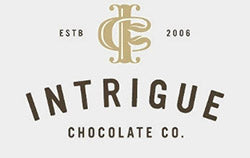Free Shipping on all orders of $85 or more!
Free Shipping on all orders of $85 or more!
August 02, 2021 1 Comment

What does "70%" on a chocolate bar mean?
Many customers come to our Pioneer Square store and discover there is so much more to learn about chocolate. They know that they enjoy chocolate, and would like to taste something similar to what they've had in the past, yet all the chocolate in the store is visually very similar. We shop for food with our eyes - if it looks tasty it is worth trying - but chocolate all looks very...brown...and our eyes can't discern if it's going to be a bitter flavor, milky or cream, or even overly sweet. It all looks roughly the same. This is where percentages can help you understand what you are purchasing.
The percentage on the bar indicates how much of the bar is made from cacao. Anything that comes directly from the bean is included in the percentage listed (cocoa mass and/or cocoa butter). The remaining percentage is everything other than cacao: sugar, powdered milk, and any other inclusions or additives. A 60% craft chocolate medallion in our store is 60% cacao and 40% sugar, by weight. This is a great explanation in a nutshell, but since you are reading this, you might like to know a few exceptions to the rule.
Exception 1: Cacao mass (ground up cacao beans) is actually a combination of two components: cocoa solids and cocoa butter. Cocoa solids contain all of the chocolate flavor, while the cocoa butter is all about the melt, shine, and snap. Some chocolate makers will add cocoa butter to help the chocolate making machines do their job by making the chocolate more fluid. We like to add a few ounces to every 20lb batch, about 5% additional cocoa butter. Some chocolate makers go as high as 15% added cocoa butter if they are seeking very silky smooth texture. In both examples, the percentage of cacao may not change, yet the chocolate is wholly different from the other. You will likely find 70% chocolate in Europe being lighter in flavor and more silky smooth (more cocoa butter), while American made craft chocolate tends to emphasize the cacao mass flavor with less butter and is therefore more intensely flavored.
Exception 2: The remaining un-named percentage can be anything. Vanilla is a common addition, as are small amounts of salt or other flavorings, dried fruits or nuts, powdered milk, and sometimes lecithin. The American craft chocolate movement has often taken up the banner of "2 ingredient chocolate", which is just cacao with sugar, making the percentages more clear to the consumer. However this philosophy varies with each company, so it is wise to avoid assumptions until you read the back label.

Exception 3: Sometimes the percentages of the bar reflect only the percentage of the starting base chocolate, but does not account for what is added during the bar making process. With our spiced chocolate bars, we start with a 72% chocolate from Belgium (which is already 28% sugar), and then we add other spices or honeys. The Hops & Clover Honey bar, for instance, displays a 59% on the package - we start with a 72% and add at least enough honey to lower the overall percentage of cacao to 59%, making it our sweetest bar in the lineup. Another approach would be to label it as "72% chocolate with ______", keeping the inclusion separate from the flavor profile of the base chocolate. That can be useful when some inclusions like dried fruit or nuts, since the pieces are embedded in the chocolate without directly impacting the "darkness".
Exception 4: Percentages in no way reflect the expected flavor. We've had 70% chocolates that tasted lightly sweet, floral, and melted like a dream. We've also had 70% chocolates that were bitter, sour, and somehow even worse, *flat*. You'll just have to try a lot of different chocolates and decide on your favorite makers.
All this said, the percentage on the bar is still a useful guide to understanding sweetness and sugar levels. If you like it sweet, look for a lower percentage! And if you like tasting the flavor of the cacao bean without the distraction of sugar, aim for 80% or higher. But always read the ingredient list.
Comments will be approved before showing up.

Candy Barthel
August 03, 2021
Yesterday I bought a new-to-me chocolate bar because it was on sale. I didn’t notice that it was only 44% – I favor a dark chocolate. After reading your blog, I went back to read the ingredient list on the bar – as follows: cane sugar, cacao beans, cocoa butter, whole milk, non-fat milk, coffee beans, soy lecithin, vanilla. The flavor is mokaccino and that is what you get – strong espresso taste, very smooth and meltable, sweet but little actual chocolate flavor. While it is interesting and even good it is not what I look for in a chocolate bar. Thanks for the tip.